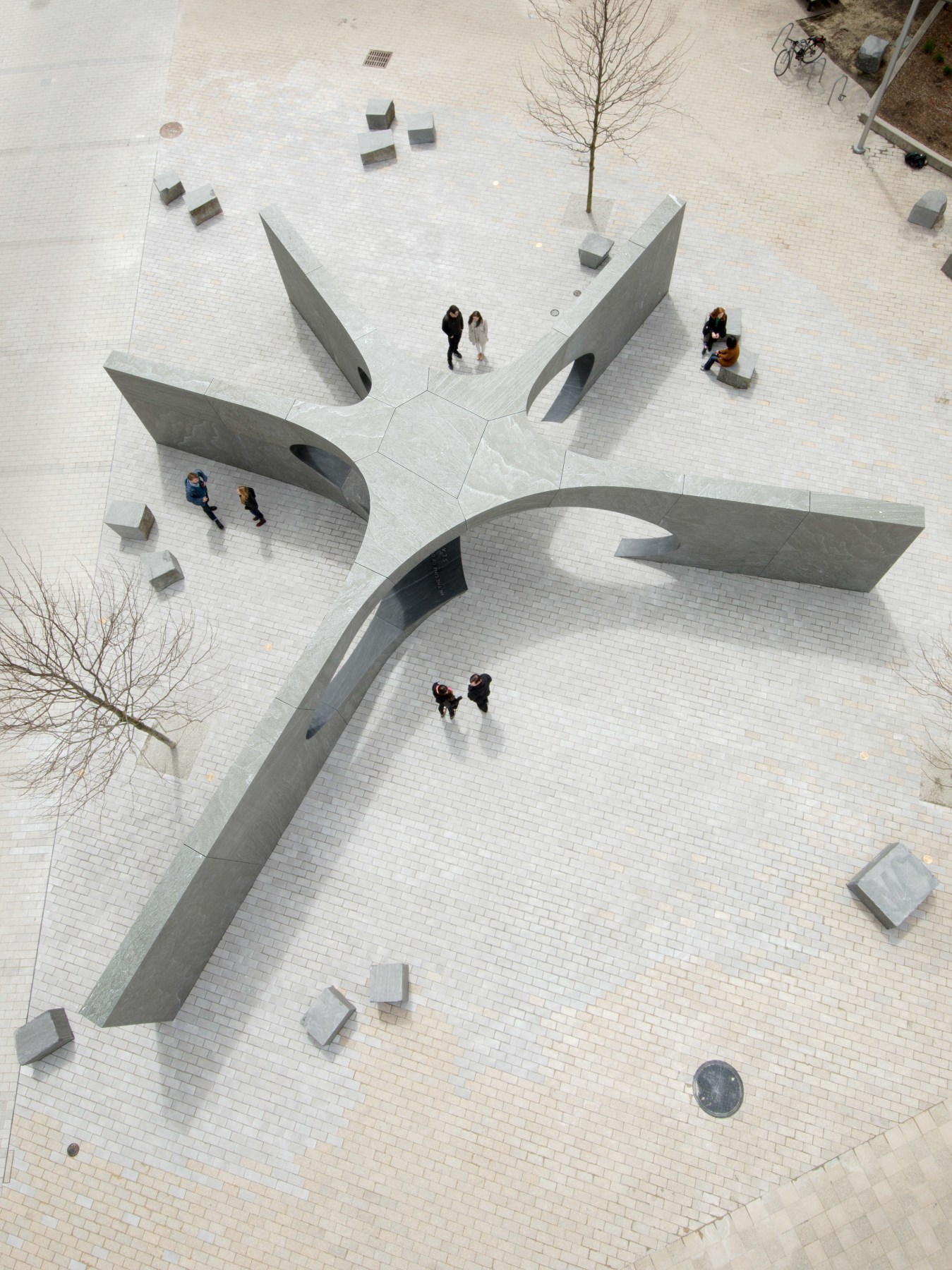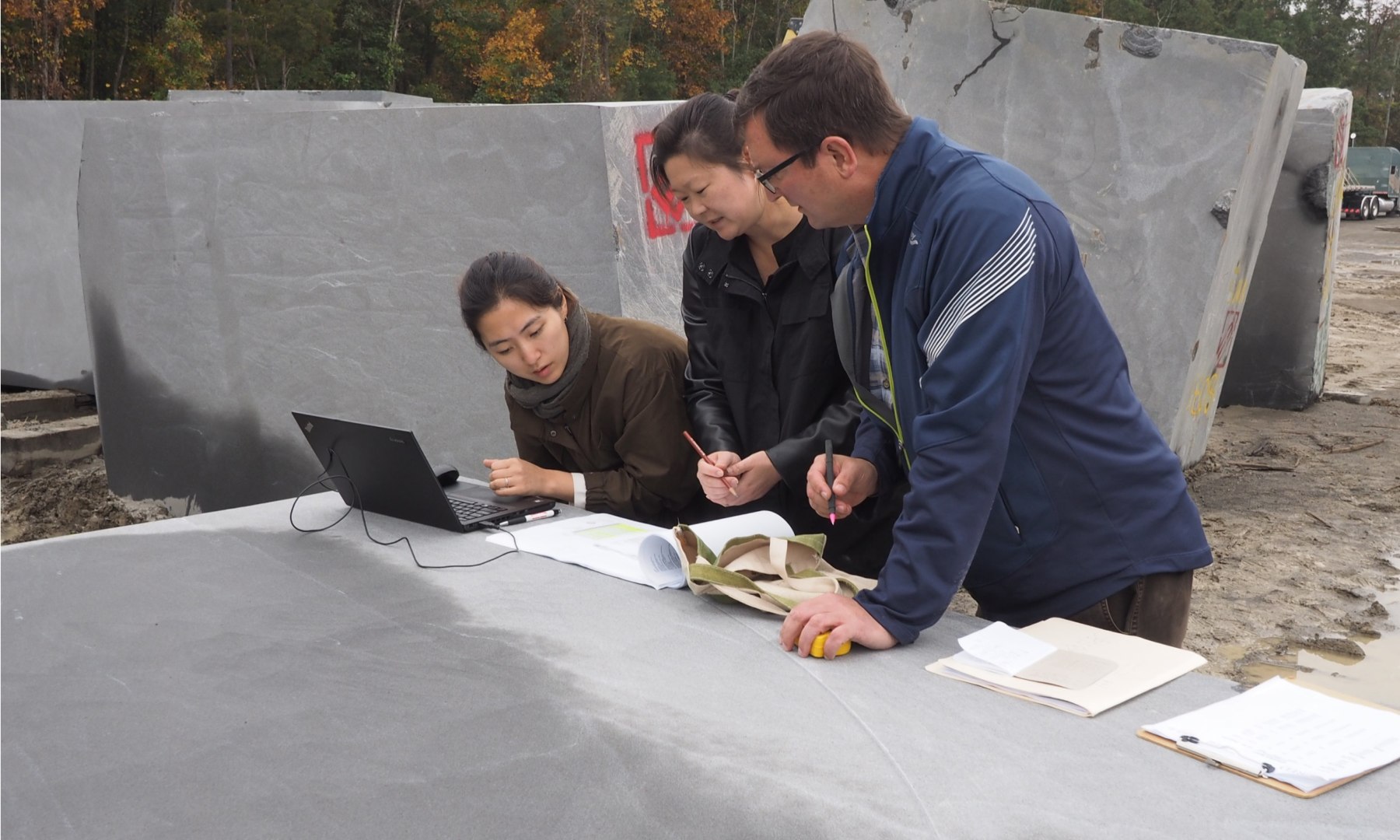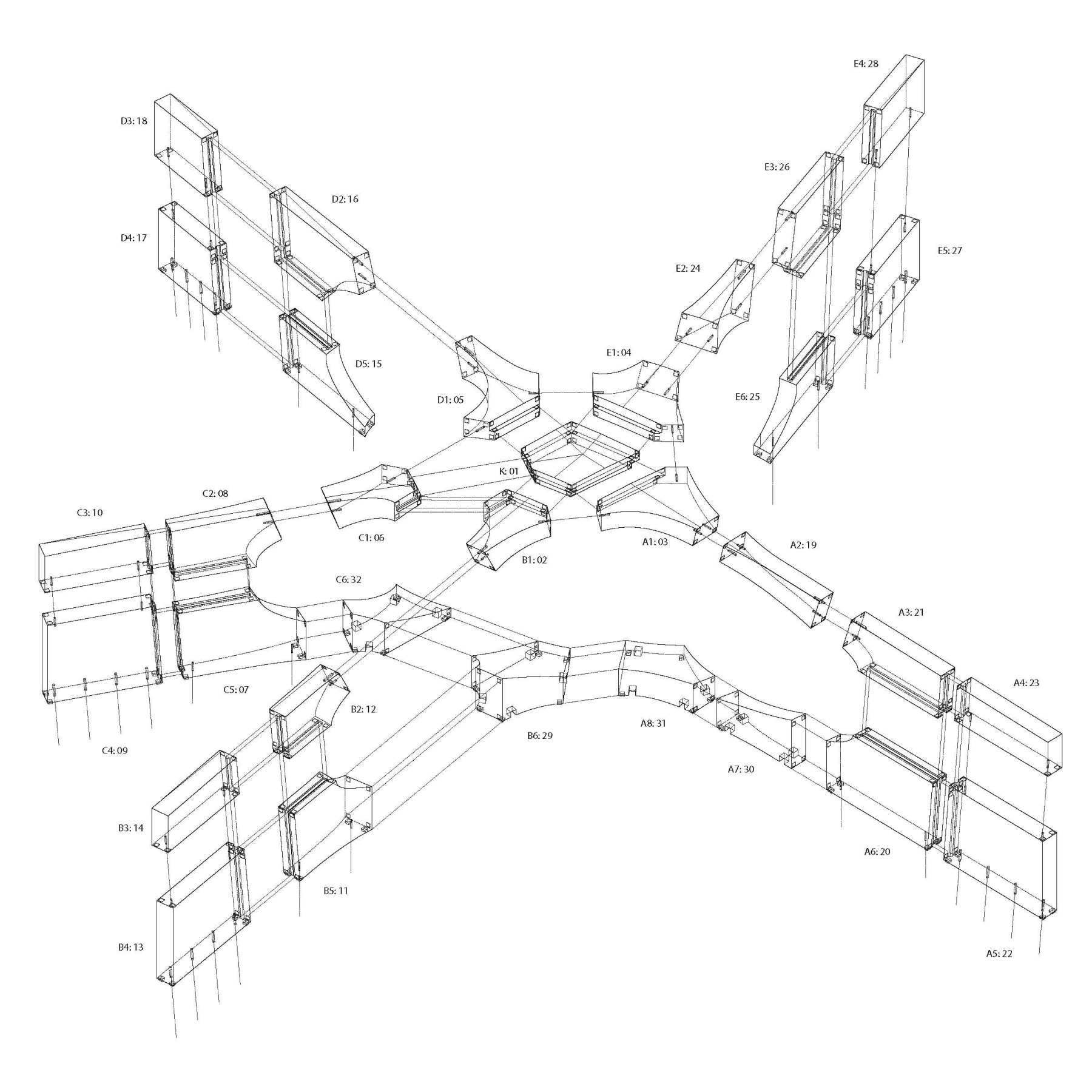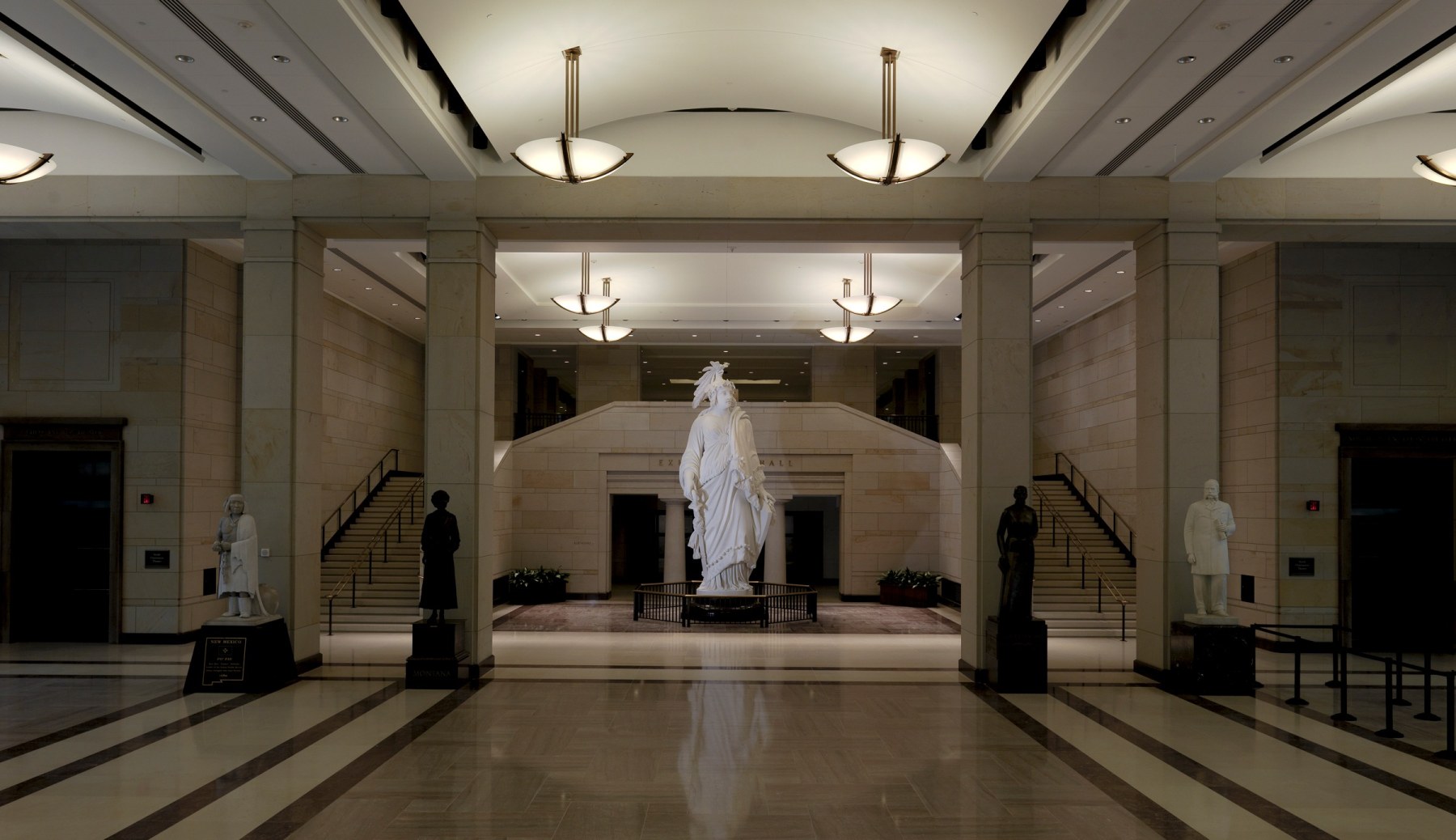
Officer Sean Collier Memorial
Location: Massachusetts Institute of Technology, Cambridge, Mass.
Client: Massachusetts Institute of Technology
Stone Fabricator: Quarra Stone Company
Design: Höweler + Yoon Architecture
Specialty Masonry Consultant: Ochsendorf DeJong
Structural Engineer: Knippers Helbig Advanced Engineering
Construction Manager: Suffolk Construction
The Sean Collier Memorial at the Massachusetts Institute of Technology (MIT) in Cambridge, Massachusetts, is a permanent tribute to the MIT police officer who was killed in the aftermath of the Boston Marathon bombing in 2013. The memorial, designed by Höweler+Yoon Architecture, is a curvilinear vault made from 190 tons of granite. It features five half-arches that symbolize outstretched fingers and meet at a central vault, representing a community coming together after tragedy.
Memorial Design Blends Modern Technology with Medieval Construction Techniques
The design of the memorial required complex engineering and construction techniques, combining contemporary tools with a construction method reminiscent of the Middle Ages. Advanced software and 3D-printed models were used to refine the design and understand the structural forces at play.

Working with a master stone mason in Madison, Wisconsin, Ray initially had the work carved by a machine with a robotic arm and it was subsequently refined by human hand. The sculpture was modeled on a single horse which was then doubled, with the rear animal only partially visible. Close inspection of the work’s matte surface is intended to reveal traces of the process of the relief’s mechanical production. In this manner, the artist anachronistically combines cutting-edge technology with material originating at the birth of the planet, and by extension locates the period of human intervention and mortality in sobering, relative terms.
As Ray has observed, “A sculpture physically ages as it slips into time. Authorship, context and content fade away long before sculptural stone turns into sand.”
Read full text on Metropolitan Museum of Art website.

A Symbol of Remembrance and Resilience at MIT
The memorial also includes elements that honor Sean Collier, such as Braille studs representing his badge number and a quote from his eulogy. At night, the memorial is illuminated by lights that map to the positions of stars on the night of the tragedy.
The completed memorial stands as a symbol of community and remembrance, paying tribute to Sean Collier and the resilience of the MIT community in the face of tragedy.


